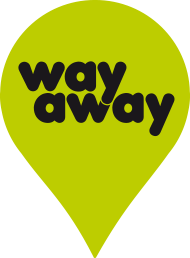The best way to get around Taipei:
The best way to get around the city is to use the metro (MRT). It's super fast, convenient and cheap (from NTD 20 one way), and it reaches most of the tourist attractions. Sometimes you will have to combine it with a bus (15 NTD), and we already warn you that these are not so comfortable... the drivers drive quite fast and are very rough. But they are quite frequent and fast, so they can be convenient. To see the best combination of metro / bus to choose, it is best to do a search in the Google Maps app.If you have no budget problem and / or you are a group of 4, then it can compensate you to move in Uber. The routes through the city usually cost around 150 NTD (about € 5), it is available throughout the city, with a few minutes of waiting, and you will always be clear about the route and the price from the beginning. They are a little more expensive than taxis, but it solves the communication problem with the taxi driver (sometimes it is difficult to make them understand where you want to go). Of course, at peak times and especially if it rains or is a weekend, prices can skyrocket up to 350 NTD or more (about € 10), with 8 or more minutes of waiting. In that case, when you see the estimated price that the Uber application gives you, we recommend you first try to take a taxi or public transport.
